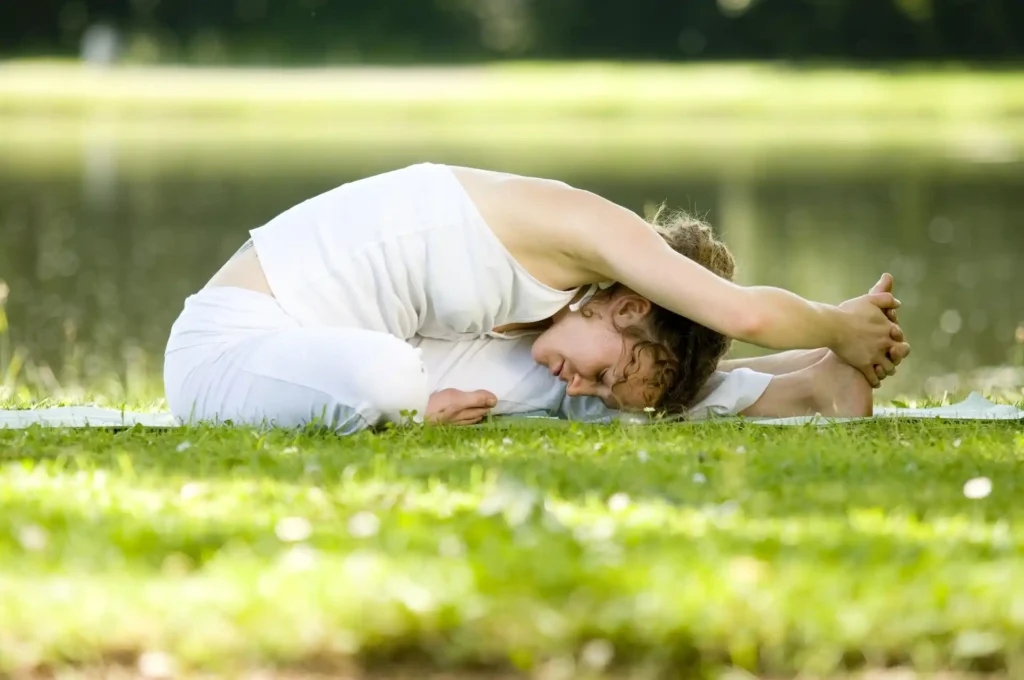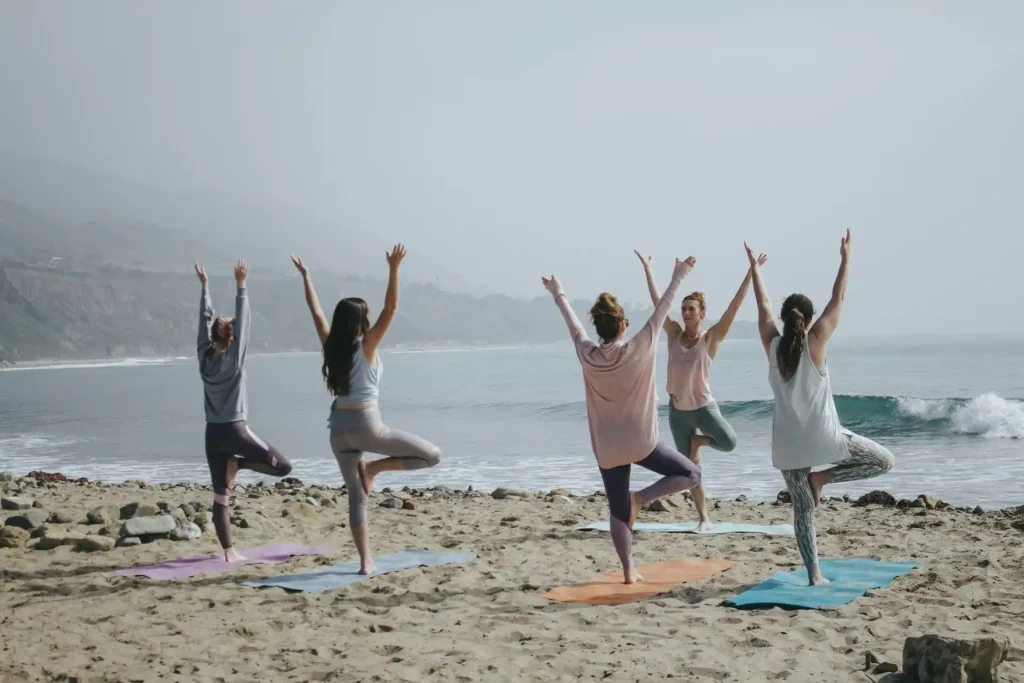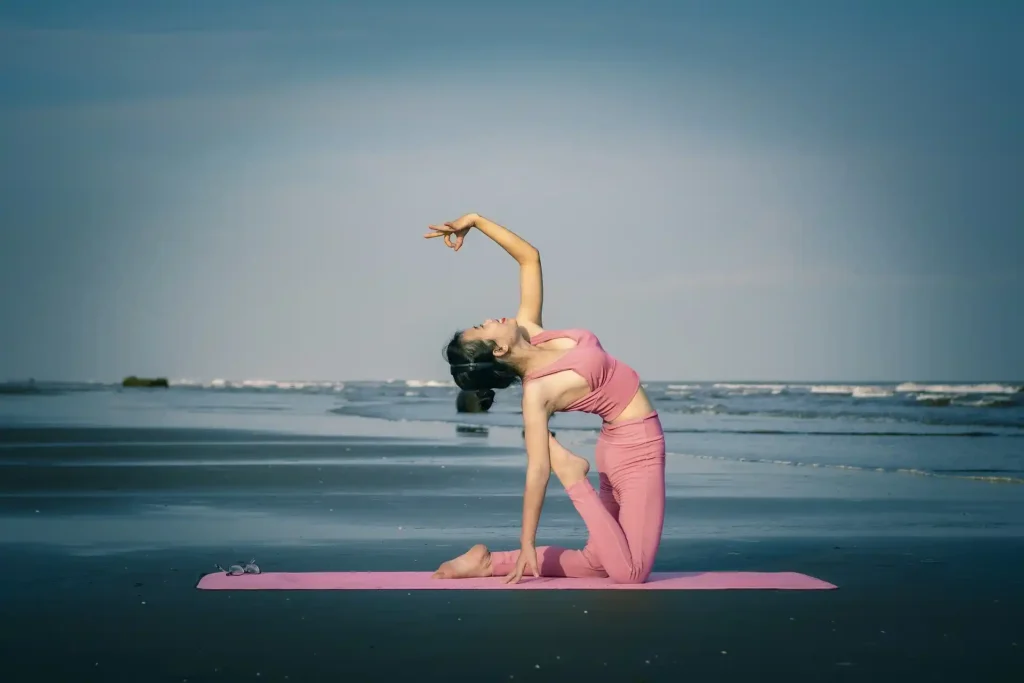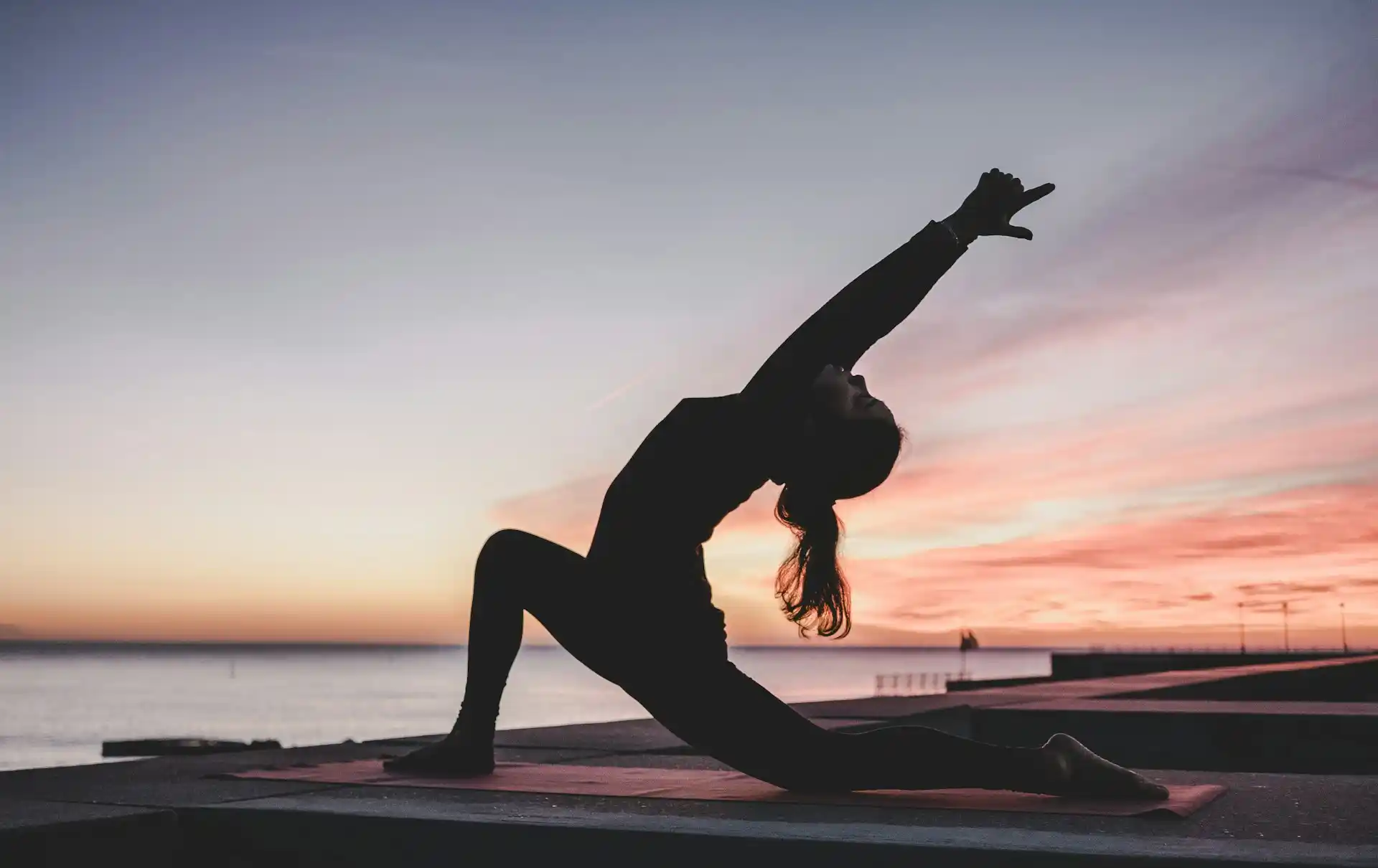The different types of yoga offer a variety of practices, each designed to nurture your physical, mental, and emotional well-being. From traditional styles to contemporary adaptations, there’s something for everyone, whether your goal is to increase flexibility, manage stress, or cultivate a deeper sense of spirituality.
With so many options available, it can be tricky to know where to start. In this article, we’ll explore 10 popular styles of yoga, each with its own unique benefits, so you can discover which one best aligns with your personal goals and lifestyle.
Keep reading to find the practice that will help you unwind, rejuvenate, and grow.
What is Yoga?
At its core, yoga is a series of physical postures (asanas), breathing exercises (pranayama), and meditation techniques designed to unite the body and mind. The word “yoga” itself comes from the Sanskrit term meaning “to unite” or “to join,” symbolizing the connection between the body, consciousness, and the environment.
The practice itself is not only about physical movement; it also emphasizes mental clarity, emotional balance, and a philosophy rooted in ethics and mindfulness. Whether you’re looking to improve your physical health, manage stress, or deepen your spiritual practice, yoga provides a path toward achieving all of these goals.

Source: Pixabay
Common Types of Yoga
Yoga comes in many forms, each with its own focus and benefits. Here are 10 most popular styles:
1. Vinyasa
Vinyasa is a dynamic, fluid style that synchronizes breath with movement. It’s often referred to as “flow yoga” due to the continuous, flowing nature of the practice. Vinyasa can feel like a dance, with each posture transitioning smoothly into the next.
Benefits:
- Enhances body awareness
- Improves focus and concentration
- Reduces stress and anxiety
2. Iyengar
Known for its precision and attention to detail, Iyengar focuses on alignment in every pose. It often involves the use of props such as blocks, straps, and blankets to help practitioners maintain proper posture and ensure safety during the practice.
Benefits:
- Develops patience and mindfulness
- Improves mental clarity
- Great for people with injuries or physical limitations
3. Hatha
This is a gentle form that is perfect for beginners. It focuses on static postures combined with breathing exercises. The practice emphasizes relaxation and stress relief, allowing practitioners to slowly build strength and flexibility over time.
Benefits:
- Ideal for beginners
- Promotes relaxation and stress relief
- Improves flexibility and posture
4. Kundalini
Kundalini is a spiritual practice that focuses on awakening the energy stored at the base of the spine. It involves a combination of specific postures, breathing exercises, chanting, and meditation to help increase self-awareness and inner peace.
Benefits:
- Enhances self-awareness and emotional balance
- Deepens spiritual connection
- Promotes relaxation and mental clarity
5. Bikram
This type is practiced in a heated room, typically at temperatures around 105°F (40°C), and follows a series of 26 poses. This style is known for its detoxifying effects, as the heat encourages sweating, which helps the body eliminate toxins.
Benefits:
- Detoxifies the body through sweating
- Builds endurance and mental resilience
- Enhances flexibility and strength
6. Ashtanga
Ashtanga is a rigorous style that follows a specific sequence of poses, linking movement with breath in a steady, rhythmic flow. The practice is physically demanding, requiring strength, flexibility, and focus to complete each sequence of movements.
Benefits:
- Improves discipline and focus
- Builds strength and flexibility
- Reduces stress and anxiety
7. Restorative
This is a deeply relaxing practice that focuses on holding poses for longer periods, often with the aid of props. This practice aims to deeply relax the body and mind, allowing the nervous system to calm and the body to restore itself.
Benefits:
- Reduces anxiety and promotes relaxation
- Improves sleep quality
- Restores balance to the body and mind
8. Yin
Yin targets the deep connective tissues of the body, focusing on long-held postures to stretch and release tension in these tissues. Poses are held for several minutes, allowing for deep release and enhanced flexibility.
Benefits:
- Improves flexibility and joint mobility
- Cultivates patience and mindfulness
- Releases deep-seated tension in the body
9. Anusara
This practice combines alignment principles with a heart-centered philosophy. This modern style emphasizes positivity and emotional well-being, with an open approach that encourages practitioners to follow their hearts and express themselves authentically.
Benefits:
- Boosts self-esteem and inner positivity
- Enhances emotional well-being
- Promotes alignment and balance
10. Prenatal
Prenatal yoga is designed specifically for expectant mothers, with poses that help to increase strength, flexibility, and relaxation during pregnancy. It also includes breathing exercises to reduce stress and prepare the body for childbirth.
Benefits:
- Relieves pregnancy-related stress and anxiety
- Improves flexibility and strength during pregnancy
- Prepares the body for labor and delivery
Choosing the Right Types of Yoga
When choosing a practice, it’s important to consider your goals, fitness level, and any physical limitations you may have. Here are some tips to guide you:
- Identify your goals: Are you seeking physical fitness, relaxation, spiritual growth, or a combination? Different practices focus on various aspects of well-being.
- Consider your physical limitations: If you have injuries or health concerns, styles like Iyengar, which uses props for proper alignment, might be ideal.
- Experiment with different styles: Trying out a range of options can help you find the practice that resonates with you.
Listen to your body: Notice how your body responds during and after each session. The right practice should leave you feeling rejuvenated, not drained.

Embrace the Benefits of choosing types of Yoga
Yoga is a diverse and adaptable practice that enhances physical, mental, and emotional health. By exploring various styles, you can discover the one that aligns best with your goals, whether you’re seeking relaxation, fitness, or spiritual growth. No matter where you begin, the key is consistency. Choose a style that suits you, commit to regular practice, and let it bring balance and well-being into your life.

Ready to Begin Your Yoga Journey?
Whether you’re a beginner or an experienced practitioner, yoga offers endless benefits to improve your quality of life. if you are in Bali, don’t forget to visit our place, Yoga Union Bali. Here, we have learned about yoga where you can become a yoga teacher after visiting our place because our place has been validated in the certificate to become a yoga teacher training. So, don’t forget to contact us now, roll out your mat, take a deep breath, and start your practice today!

